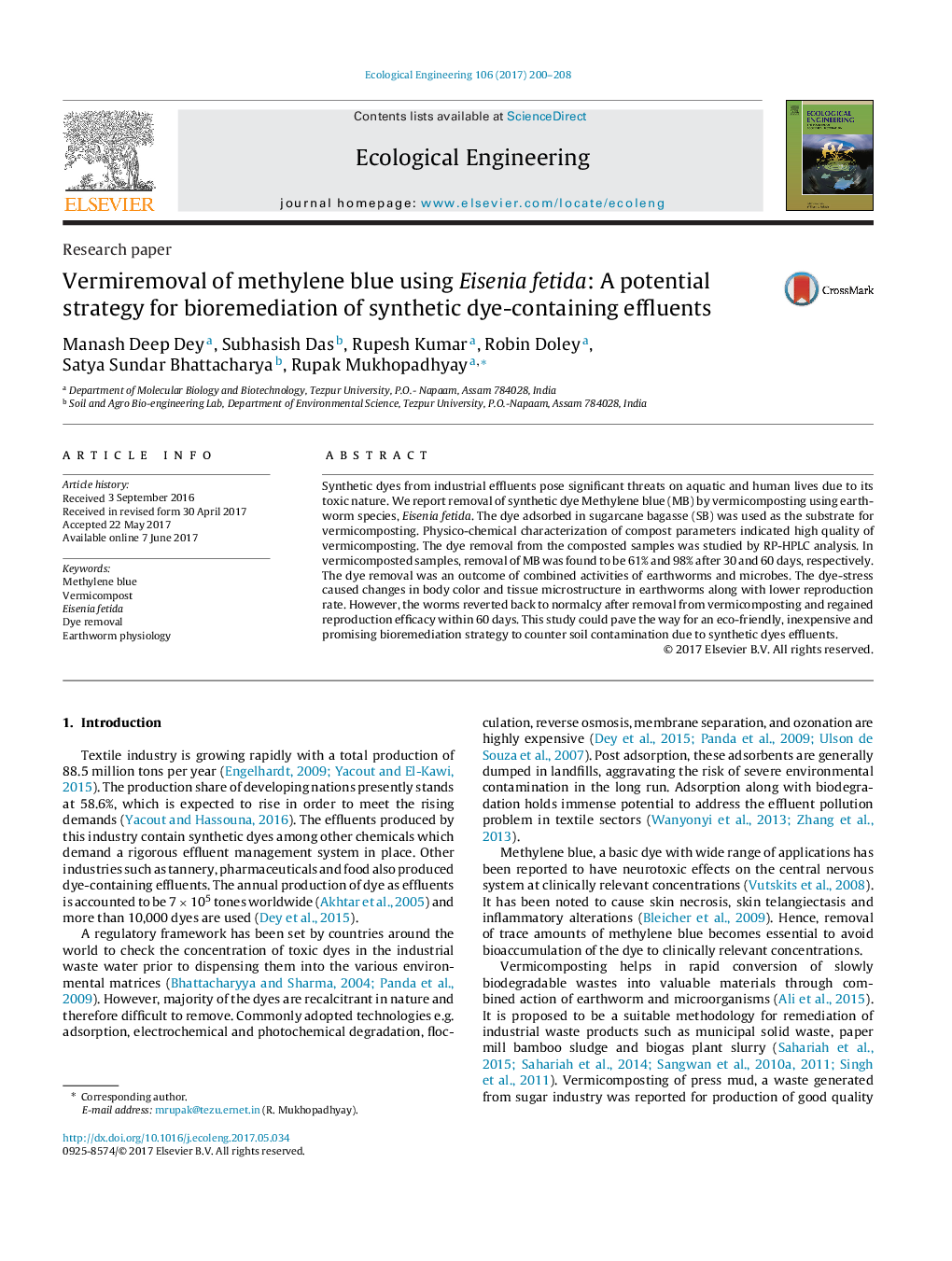| Article ID | Journal | Published Year | Pages | File Type |
|---|---|---|---|---|
| 5743836 | Ecological Engineering | 2017 | 9 Pages |
â¢Eisenia fetida-mediated vermiremoval of Methylene blue (MB) was attempted.â¢Characterization of compost parameters asserts high compost quality.â¢Procedure of dye measurement from the compost was established using RP-HPLC.â¢The dye removal from the vermicomposted sample was a synergistic effect of earthworms and microbes.â¢Initial stress due to dye was overcome by the earthworm in a dye-free environment.
Synthetic dyes from industrial effluents pose significant threats on aquatic and human lives due to its toxic nature. We report removal of synthetic dye Methylene blue (MB) by vermicomposting using earthworm species, Eisenia fetida. The dye adsorbed in sugarcane bagasse (SB) was used as the substrate for vermicomposting. Physico-chemical characterization of compost parameters indicated high quality of vermicomposting. The dye removal from the composted samples was studied by RP-HPLC analysis. In vermicomposted samples, removal of MB was found to be 61% and 98% after 30 and 60 days, respectively. The dye removal was an outcome of combined activities of earthworms and microbes. The dye-stress caused changes in body color and tissue microstructure in earthworms along with lower reproduction rate. However, the worms reverted back to normalcy after removal from vermicomposting and regained reproduction efficacy within 60 days. This study could pave the way for an eco-friendly, inexpensive and promising bioremediation strategy to counter soil contamination due to synthetic dyes effluents.
